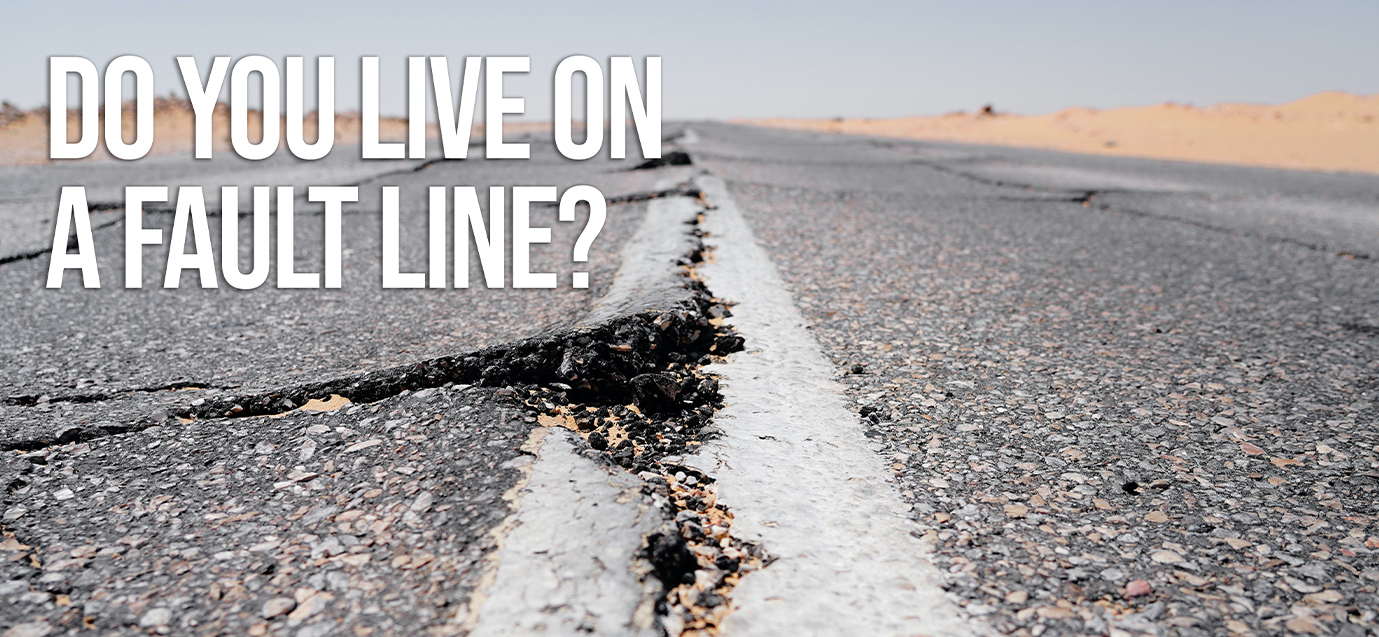You must have cookies enabled for the site to work properly.

Do You Live on a Fault Line?
Tuesday April 12, 2022
What is a Fault
Faults are large cracks in the Earth’s crust where tectonic plates move alongside each other. These faults can be found all throughout the Earth whether they’re under land, water, or both. When these plates rub together, they can create pressure under the surface and cause Earthquakes. These movements can happen without notice and can’t be predicted like other natural disasters. We have warnings for hurricanes, tornadoes, and wildfires but an earthquake can happen unexpectedly, in virtually any place.
Are you safe from earthquakes?
While some areas in the U.S. are more prone to higher magnitude earthquakes, this doesn’t mean that less active areas are completely safe from an earthquake. The U.S. Geological Survey (USGS) estimates that around 500,000 earthquakes occur around the world each year with many more going undetected. View the map below to see your regions risk of earthquakes:

Types of Faults
There are 4 main types of faults found under the Earth’s surface: normal, reverse, strike-slip and oblique. Faults come in all sizes, some are small, offset by only a few feet while others are large enough to be seen from space. The size of the fault corresponds to the potential earthquake magnitude.
Normal Fault

Normal faults form when the hanging wall drops down in relation to the footwall. Extensional forces, those that pull the plates apart, and gravity are the forces that create normal faults. They are most common at divergent boundaries. These faults are "normal" because they follow the gravitational pull of the fault plane, not because they are the most common type. (ThoughtCo)
Reverse Fault

Reverse fault is when the hanging wall moves upwards. The forces creating reverse faults are compressional, moving the sides together. Reverse faults have created some of the largest mountain chains in the world including the Himalayas and the Rocky Mountains.
Strike-Slip Faults
Strike-Slip Faults have walls that move laterally instead of up or down. The fault plane is usually vertical so there isnt a hanging wall or footwall. The San Andreas Fault is a Strike-Slip Fault.

Oblique Faults
Oblique Faults are when there is a combination of different types of faults. The Sierra Nevada Valley is an example of an oblique fault.
How to Prepare
Preparing for an Earthquake can be a daunting task. An unpredictable natural disaster poses the most risk of all and this is why they need to be prepared for in advance. Use these tips to develop a plan with your household:
- Create an emergency communications plan with an out-of-state contact.
- Make a supply kit with enough food and water for several days, a flashlight, a fire extinguisher, and a whistle.
- Assess your home and make improvements wherever possible. Secure heavy objects and objects that hang on walls.
- Store heavy, breakable objects closer to the floor.
- Practice drop, cover, and hold on with your family.
For more information on preparation, read our earlier article here.